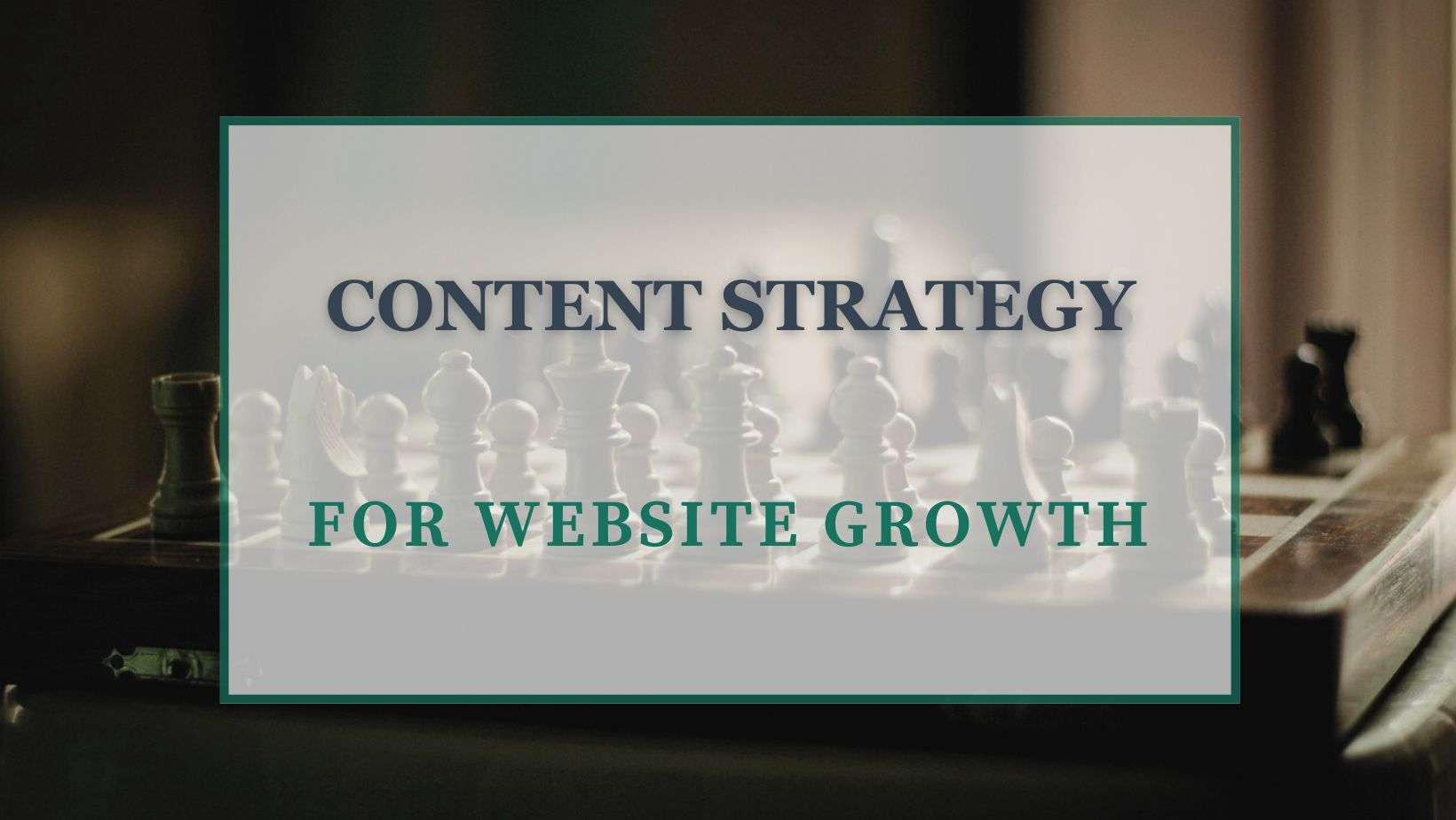Build Content Strategy for Your Business… Minus the Uncertainty
July 12, 2024
Build Content Strategy for Website Growth in Your Business… Minus the Anxiety
With so many different marketing channels to hit these days, figuring out what to publish, post, tweet (is it still called that?), and send can be a huge headache.
But the truth is, it doesn’t have to be.
At Maggie Writes Copy, I break organic strategies down into simple steps – today’s topic… how to build content strategy that converts.
Let’s start with the basics – what your marketing system looks like now.
Your Marketing Content Strategy for Website Traffic
To discuss how to build content strategy, let’s start with your building blocks of content strategy. This would be your marketing channels.
This might look like:
- Longform content: Blogs, YouTube videos, Podcasts
- Social Media: Reels, Carousels, Posts, Ads (not organic but applicable)
- Opt-ins: signups, e-books, audits, quizzes, webinars
- Outreach: Email newsletters, email sequences
Before we go on, take a moment to think about what current channels you’re using to reach your audience.
Now let’s discuss how these channels help reach your audience…

Longform Content
This is where the value lies. The goal of longform content is to share important information that is relevant to your audience. The key is to answer their questions or solve their problems.
Every human learns differently. So diversifying your longform content forms can really cement you as an authority in your industry and reach the widest version of your audience possible.
But at the very least, you should be hosting a blog to drive people to your website with Search Engine Optimization.
Social Media
The goal of Social Media should be to drive people back to your website – your website is where you control the narrative.
Social media is a great tool because it’s where your audience is hanging out.
Rather than spreading yourself thin with tens of social media channels, you should choose a couple that are most used by your target audience to focus on.
Whether this is:
- X
- Meta
- TikTok
- Threads
Or any of the other myriad of Social channels that pop up.
Get in front of your audience where they’re at… then bring them back to where you’re at.
Opt-ins
One of the most overlooked channels when it comes to content strategy – yet this can make or break your business success.
Opt-ins can be as simple as a 10% discount to capture an email. Or they can be as complex as a “How to” guide for something your audience desperately wants to know.
The key to a good opt-in is that it’s something your audience really wants.
Or…
Something fun – like a quiz – that really entertains your audience.
You have to build a desire and convince your audience your communication is useful to them.
So how to you capitalize on them opting into your emails?
Email Outreach
Finally, the ball is fully in your court. Email outreach allows you to talk to your engaged audience when you want to. Not when any outside algorithm allows you to.
Email outreach is good for automating your frequent communication. Think email sequences based on actions your audience takes:
- Welcome Sequence: after they opt in
- Abandoned cart Sequence: if they forget to hit the “Buy” button
- Post-purchase Sequence: thanking them and telling them what to expect next
Email sequences have little to do with your content creation strategy. As they are automated they don’t correspond to current content.
Email newsletters (broadcasts) however are definitely part of building content strategy. They are fundamental to a cohesive marketing strategy.
Next, let’s talk about how these content sources can all work together rather than creating an individual brainstorming nightmare.
Content Creation Ideas – Effective Marketing Content
The first step in this process is knowing what your audience wants and needs. Building your effective marketing content hinges on you knowing what your audience wants.
You can learn this with some simple market research:
- What kind of content does your audience engage with: through likes, shares, comments, and purchases?
- What content have you created that has failed: was it because of an algorithm, or actual audience disinterest?
- What is your audience talking about: in Facebook groups, communities, and social posts?
- What are your competitors offering: and how is their audience reacting to their offers?
While there are many different ways to conduct market research, these are some of the simplest – and quickest.
Based on what you’ve discovered, it’s time to build your Content Strategy for Website Traffic.
Longform – Blog Marketing Content
Blogs will be the cornerstone of your content strategy because it is the most time-intensive and brings the most value to your audience.
Rather than tiny snippets of information, you’re bringing the whole topic to them. Blogs (currently) tend to perform best for SEO if they’re over 2000 words.
Longform content gives you so much to work with when you’re breaking it down into those aforementioned snippets.
You choose your overarching topic, now it’s time to pack it full of lots of different ideas, truths, and subtopics.
The subtopics are what we’re going to break down next for your Social posts.
Cohesive Social Media Content
Let’s get one thing clear right off the bat. You are going to repurpose your content into social posts. You aren’t going to simply copy and paste that blog into smaller posts.
This is where rewriting your subtopics into actionable social media posts comes into play.

Content Creation Example:
Let’s say we wrote a blog post for a fitness studio titled: The Top 7 Ways to Keep Up with a Fitness Routine.
Now we’re going to break it into 9 social posts.
- Why sticking to a fitness routine is important
- First habit that helps you continue your exercise routine
- Second habit…
- Third habit…
- Fourth habit…
- Fifth habit…
- Sixth habit…
- Seventh habit…
- A quote from the article
These can be created in many different post formats. But they all have one thing in common – they lead people back to your website/blog. So it’s important they’re rewritten and not copied.
Why is it important for your audience to go to your website?
- Build your SEO and website traffic.
- Get them away from the algorithm-based platform and onto your online real estate.
- Give you more authority in your niche and more control over what your audience sees.
Next, let’s talk about your Opt-in.
Opt-ins that Convert to Signups
Why does it matter that your opt-in aligns with your content creation?
An opt-in that doesn’t align with the content your audience wants to receive isn’t going to convert your site visitors to join your email list.
If your site visitor landed on your site to read a blog about “How to Choose a Paint Color for their New Office Space” they aren’t going to want to sign up for an email list if the opt-in is a “how to” guide for plumbing.
These may both fit in the renovation space. But they are far from similar topics.
So making sure your opt-in is broad enough for your whole audience but narrow enough to actually convert, is hugely important.
In this instance, a better opt-in might be a hiring guide for subcontractors. Then your audience can hire the best painter or plumber around.
Now that people have opted in, what’s the next step?
Content Strategy for Your Email Newsletters
Email is a unique form of content. This is because your audience has given you permission to show up, on your time, in their virtual living room.
Email Newsletters can – and should – be a lot more personal than social media. Often giving insight into your life and business. In fact, storybased emails can be hugely successful.1
So how do you build content strategy for your emails that’s personal and still cohesive?
Again, we’re going to base your content on your blog post. Let’s say the title is: “Sustainable Food – Source the Freshest Ingredients for Your Dinner Table.”
Then you’re going to create three different emails about this content.
- Share a personal story in your newsletter about how bad chemicals affected your family’s health. Provide the link to the blog at the end for further reading.
- Share a statistic about how sustainably grown food is helping the world. Then link to the blog for further reading.
- Summarize the blog for your readers with some of the key points and how they affect their lives. Then direct them to read the article on your blog.
You may be wondering why the goal is to get your email list back to your website. Didn’t we just put in all this work to get them to your email list?
The truth is, people joined your email list because they found value in your content or your product.
Continuing to remind them of what you offer helps to build the Know, like, and trust factor you need to get sales.
Email marketing isn’t all about sending out sales blasts, it’s about nurturing the audience you already have.
Directing people back to your website has the added benefit of helping your SEO as well.
Let’s summarize how your content strategy for growth was built.
Content Strategy for Website Growth Example
We started with 1 longform blog post. This is where it took us.
- 1 Blog Post – every 2 weeks.
- 9 Social Posts – to post over the course of several weeks.
- 1 opt-in – either keep the same one or create a few different ones to align with your different content pillars.
- 3 emails – sent over the course of a few weeks, directing your audience to new content that keeps your brand fresh in their minds.
If you figure you’re posting blogs every two weeks and getting 5-10 blog posts out of each blog and 3 emails out of each blog – your value-driven content creation is taken care of.
Now, all you have to do is add in your sales content.
You get the added bonus that your brand is more cohesive with it’s messaging across all your channels. So there’s no confusing messaging for your audience.
AND, you’re not constantly in brainstorming mode so you’re freed up to focus on other important business matters.
Effective Marketing Content Doesn’t Have to be Hard
In fact, it shouldn’t be. To build content strategy that converts, all you have to do is simplify your process. Brainstorm one blog topic your audience wants to know and build your messaging the easy way.
Hopefully, I’ve given you some good tips to build your marketing content strategy effectively. Signup for my email list so you don’t miss the next marketing tips!
Resources:
1 Storytelling in Email – Voila Norbert
Maggie Schlegel

Leave a Reply Cancel reply
P.S. This opts you into my newsletter. But I promise no spam! Unsubscribe any time.